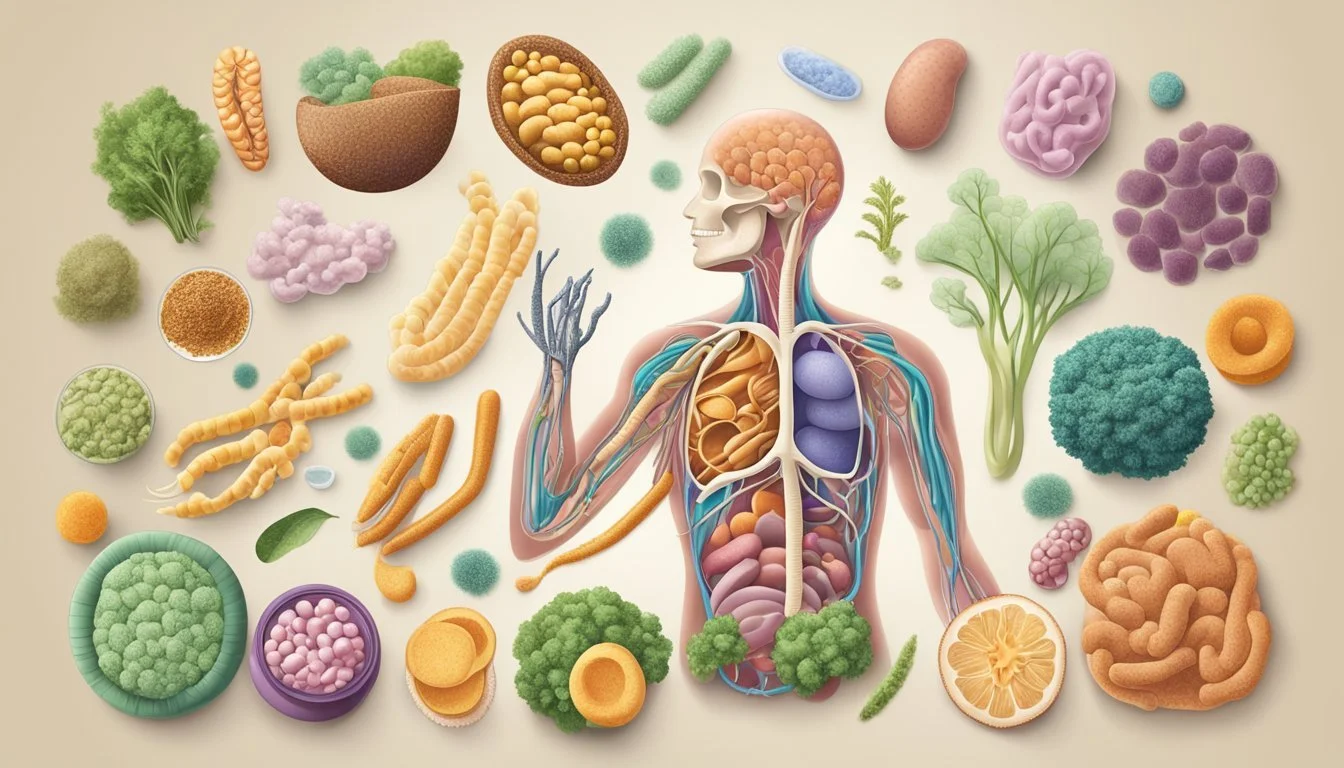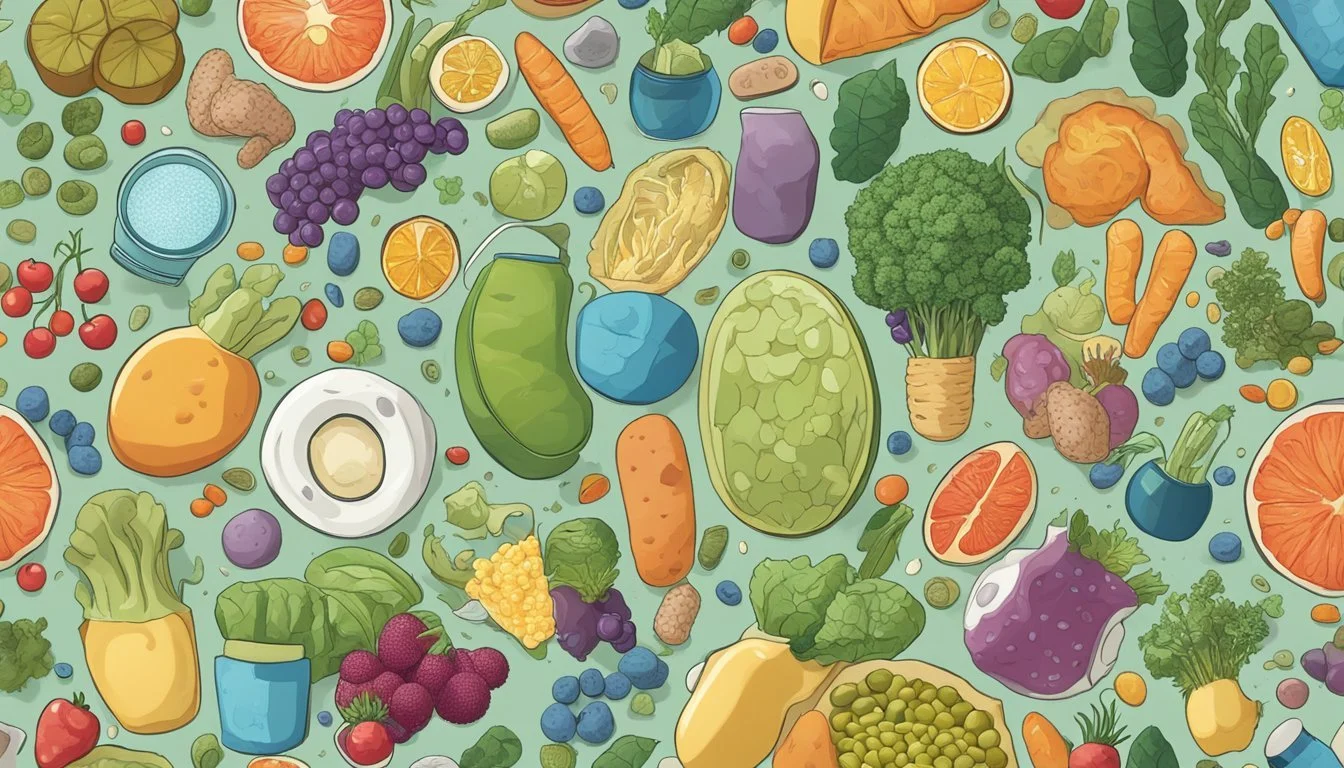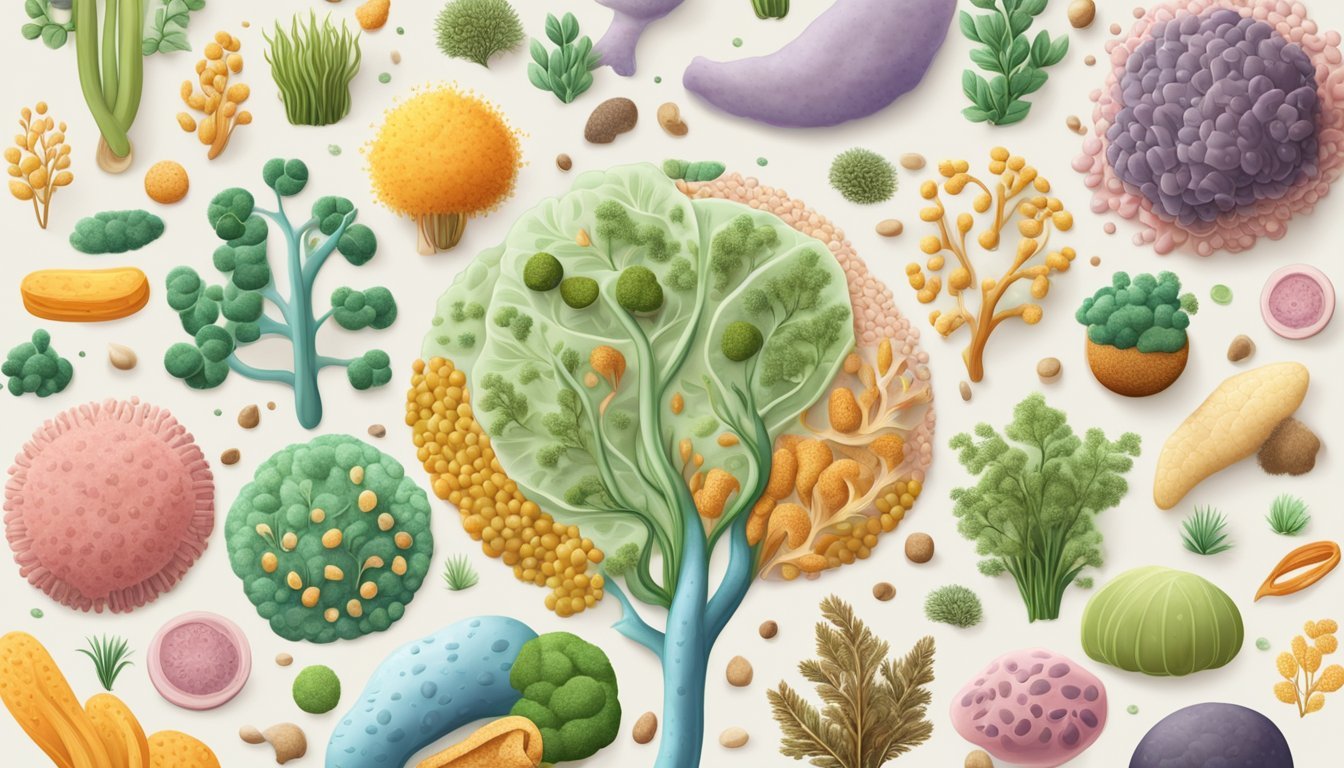The Myth of the Microbiome Diet
Separating Fact from Fiction in Gut Health
The concept of the microbiome diet emerges from the recognition of the gut microbiome's role in overall health. It suggests that fostering a healthy and diverse community of gut bacteria through specific dietary choices can lead to improved gut health and, consequently, enhanced wellbeing. The microbiome diet, as conceived by Dr. Raphael Kellman, champions the idea that by eliminating certain foods that negatively affect gut flora and emphasizing the intake of prebiotic and probiotic-rich foods, one can restore balance and function to their digestive system.
However, the assertion that the microbiome diet can single-handedly “heal” the gut simplifies the complex interactions within our digestive ecosystem. While research supports that diet influences the microbiome, it's a leap to suggest that any one dietary approach can reliably restore gut health across all individuals. Each person's gut microbiome is unique, shaped by genetics, environment, lifestyle, and even early life exposures; thus, the idea of a one-size-fits-all 'healing diet' for the gut may be more myth than reality.
In scrutinizing the microbiome diet's efficacy, it is essential to consider empirical evidence. While proponents point to anecdotal successes, skeptics urge looking at the diet's impact through the lens of rigorous scientific study. The pursuit of gut health is undoubtedly a valid goal, but whether the microbiome diet stands as a scientifically validated method to achieve this remains a topic of ongoing research and debate.
Decoding the Microbiome Diet
The Microbiome Diet has garnished attention for its potential to optimize gut health and digestion through a structured three-phase program. Developed by Dr. Raphael Kellman, this diet emphasizes natural, organic foods aided by probiotics and prebiotics, targeting the flourishing of a healthy gut microbiome.
Concept and Origin
The concept of the Microbiome Diet was introduced by Dr. Raphael Kellman, a physician and author who believes that a balanced intestinal microbiome is crucial for optimal health. The origin of this diet is rooted in the idea that the gut ecosystem, composed of trillions of microorganisms, plays a pivotal role in overall wellness, influencing digestion, immunity, and even mental health. By focusing on certain foods that promote the health of these microorganisms, Dr. Kellman asserts that individuals can restore their gut health.
Core Principles
The diet is founded on a few key principles:
Elimination of harmful foods: It recommends avoiding foods that can disrupt the microbiome, such as those containing hormones, antibiotics, and pesticides.
Incorporation of gut-healing foods: Emphasis is placed on a large intake of plant-based foods, alongside fermented foods (What wine goes well with fermented foods?) that are rich in natural probiotics.
Organic and nutrient-rich: To reduce exposure to substances that may harm the microbiome, the consumption of organic foods is highly encouraged.
Phases of the Microbiome Diet
This diet unfolds in three distinct phases, each designed to repair and rejuvenate the gut microbiome:
21-Day Elimination Diet: Intense elimination of processed foods, added sugars, and other microbiome disruptors.
Four-Week Metabolic Boost Plan: Introduces a broader variety of foods with a 90% adherence expectation, allowing for minor deviations as the gut flora begins to rebalance.
Lifetime Tune-Up: A maintenance phase with a more relaxed 70% compliance rate, designed to sustain the gut health improvements while reintroducing a wider variety of food choices.
These structured stages aim to remove substances damaging the gut, repair the gut lining with nutrient-dense whole foods, and finally, replace the gut microbiome with beneficial bacteria through the use of probiotics and prebiotics.
Gut Health and Its Influences
Gut health fundamentally influences digestion, immune function, and overall wellbeing. The condition of the gut is significantly impacted by diet, which in turn affects the composition and diversity of gut flora, the body's inflammatory responses, and even mood through gut-derived signals.
Impact of Diet on Gut Flora
Diet is a primary factor in shaping gut flora, with prebiotics and probiotics serving as vital elements for fostering beneficial bacteria. Prebiotics, found in foods such as bananas, onions, and asparagus, provide nourishment to healthy gut bacteria. Probiotics, present in fermented foods like yogurt and kimchi, introduce advantageous bacteria into the digestive system. Conversely, frequent consumption of processed foods and artificial sweeteners can lead to an imbalance in gut flora, potentially diminishing the efficacy of digestive enzymes and disrupting overall gut health.
Inflammation and Its Dietary Triggers
Inflammation within the gut can be triggered by dietary choices. Processed foods high in sugar and fat, along with excessive alcohol intake, can activate inflammatory pathways. Additionally, certain medications, particularly antibiotics, can contribute to inflammation by altering the gut microbiota balance, often necessitating the use of probiotics or fermented foods to restore harmony.
Gut-Derived Influence on Mood
Emerging research suggests that gut health can exert a significant influence on mood and psychological well-being. This connection, often referred to as the gut-brain axis, involves bidirectional communication where changes in gut flora may send signals to the brain, potentially impacting emotions and behavior. A diverse and thriving population of gut microbes, supported by a diet rich in prebiotics and probiotics, may contribute to positive mood regulation.
Assessing Food Types & Their Roles
Proper nutrition plays a fundamental role in the health of the gut microbiome. This section examines how different food types can either support or hinder gut health through their impacts on microbial populations.
Benefits of Fiber and Prebiotics
Dietary fiber, found abundantly in fruits, vegetables, and whole grains, helps to support the gut microbiome. These indigestible carbohydrates serve as food for beneficial bacteria, promoting their growth and activity. Consuming prebiotics such as inulin, found in foods like garlic, onions, and legumes, can lead to a flourishing of healthful bacterial colonies.
Examples of high-fiber and prebiotic-rich foods:
Artichokes (What wine goes well with artichokes?)
Bananas
Asparagus
Whole grains, such as barley and oats
Understanding Probiotics and Fermented Foods
Probiotics are live beneficial bacteria that, when ingested, can positively influence the existing microbiome. Fermented foods like yogurt, kefir, sauerkraut, and kombucha are natural sources of these microbes. Including a variety of probiotic foods in one’s diet can help maintain gut microbial diversity.
Sources of probiotics:
Yogurt (preferably unsweetened)
Kefir
Traditional fermented pickles
Pros and Cons of Common Food Groups
Different food groups can influence gut health in varied ways. Legumes provide a good source of fiber and prebiotics, yet some individuals might find them hard to digest. Nuts and seeds give essential fatty acids and fibers which are beneficial to the microbiome, although overconsumption may cause problems for those with sensitivities. Dairy products, except for butter and ghee, can be problematic for lactose-intolerant individuals, whereas gluten-free grains can offer a sensible option for those with gluten sensitivity.
Summary of food groups and considerations:
Dairy: Can cause issues for those with lactose intolerance; fermented dairy can offer probiotic benefits
Nuts and Seeds: Nutrient-dense but can trigger sensitivities in some
Legumes: High in fiber; can cause digestive discomfort for some
Understanding Food Sensitivities
Recognizing food sensitivities is integral to maintaining gut health. The inclusion or exclusion of certain foods, like dairy, gluten-containing grains, or specific legumes (except chickpeas and lentils, which are generally well tolerated), should be personalized based on individual tolerance. Identifying and avoiding trigger foods can prevent inflammation and ensure the wellbeing of the intestinal lining.
Common sensitivities to consider:
Gluten: May require avoidance or moderation for those with celiac disease or non-celiac gluten sensitivity
Dairy: Lactose intolerance might necessitate avoidance of most dairy, while ghee and butter could be more tolerable
Specific Foods and Supplements
The efficacy of the microbiome diet hinges on selecting particular foods and supplements that purportedly support gut health. This section explores those items integral to the diet, which aim to rebalance the gut's bacterial composition.
Superfoods for Gut Health
Superfoods believed to benefit gut health are rich in fiber, prebiotics, and antioxidants. Non-starchy fruits and vegetables such as leafy greens and berries are emphasized for their high fiber content and low sugar profile. Sweet potatoes serve as a nutritious starchy alternative, providing prebiotic fiber which fosters beneficial gut bacteria. Chia seeds, notable for their omega-3 fatty acids and fiber, are also recommended superfoods for their ability to support a healthy microbiome.
Fermented Foods: Including natural probiotics, these are crucial for a microbiome-friendly diet.
Examples: Yogurt, kefir, sauerkraut, kimchi, miso.
Fiber-Rich Foods: Act as prebiotics, promoting the growth of beneficial gut bacteria.
Examples: Asparagus, bananas, apples.
Supplements for a Healthy Microbiome
Supplementing the diet with specific nutrients can potentially support and enhance gut health.
Probiotics: Supplements containing live beneficial bacteria to restore gut flora balance.
Prebiotics: Non-digestible fibers that stimulate the growth of healthy bacteria in the gut.
Digestive Enzymes: Aid in breaking down foods more efficiently, potentially reducing gut stress.
Vitamin D and Zinc: Essential for immune function and the maintenance of the gut lining.
Supplement Role in Microbiome Health Probiotics Replenishes beneficial bacteria. Prebiotics Fuels growth of beneficial bacteria. Digestive Enzymes Aids in the breakdown and absorption of nutrients. Vitamin D Supports immune function. Zinc Vital for gut lining repair and immune modulation.
Controversial and Avoidable Items
Certain foods are suggested to be reduced or eliminated due to their potential to disrupt gut flora balance.
Processed Sugars: Can contribute to an imbalance in gut flora and the proliferation of harmful bacteria.
Alcohol: Consumption is discouraged as it can negatively affect gut integrity and microbial balance.
Common Allergens: Foods like soy and corn may need to be avoided, as they are often genetically modified and can be disruptive for some individuals.
Herbs and Spices as Digestive Aids
Herbs and spices are often included for their natural anti-inflammatory and antimicrobial properties.
Spices: Some spices can stimulate digestion and offer antimicrobial effects.
Examples: Turmeric, ginger, cinnamon.
Herbal Supplements: Specific herbs have been identified for their gut health benefits.
Examples:
Oregano Oil: Believed to have antimicrobial properties that can benefit the microbiome.
Grapefruit Seed Extract: Often used as a natural antimicrobial supplement.
Myths and Misconceptions
Exploring the landscape of dietary advice surrounding gut health reveals a range of myths and misconceptions that can mislead individuals seeking to improve their microbiome. This section addresses common fallacies associated with quick gut health solutions and better informs readers on the realities of certain food types in relation to gut health.
Detoxes and Quick Fixes
The idea that one can "detox" their gut and achieve rapid health improvements is a pervasive myth. The body's liver and kidneys naturally detoxify the system effectively. Prebiotics and probiotics are often touted as instant solutions; however, they are parts of a broader dietary pattern rather than quick fixes.
Misguided Diets and the Microbiome
Many fad diets promise to improve gut health but lack scientific support. Diets overly restrictive in nature can actually harm the microbiome by reducing the diversity of bacteria. Optimal gut health is supported by a varied diet rich in fiber rather than a narrow selection of supplements and "superfoods."
Common Misunderstandings about Dairy
Dairy is often eliminated in a microbiome diet with the belief that it is harmful to gut health. While some individuals are lactose intolerant and might benefit from avoiding dairy, for others, it can be a source of probiotics (e.g., yogurt) and nutrients vital for a balanced microbiome.
The Reality of Processed Foods
Processed foods are sometimes viewed as acceptable in moderation, yet many contain fillers, coloring, and a high amount of added sugars that can disrupt gut flora. A diet that emphasizes whole, unprocessed foods contributes to a healthier gut microbiome over one with a regular intake of such processed products.
Practical Applications and Tips
Adopting the Microbiome Diet involves a structured approach to promote a healthy gut through specific eating patterns and lifestyle changes. Below are strategies and tips for implementing this diet, maintaining it long-term, planning meals, and managing social scenarios that may present challenges.
Implementing the Microbiome Diet
When one chooses to implement the Microbiome Diet, they typically begin with an elimination diet to identify potential food sensitivities. This phase involves removing processed foods, added sugars, and anything that might disrupt the gut microbiome.
Phase 1: 21-day elimination of potentially harmful foods.
Phase 2: Introducing more varied foods, focusing on 90% compliance over four weeks.
Phase 3: A consistent approach to diet that encourages 70% compliance.
Incorporating a variety of phase-specific foods such as organic fruits and vegetables, lean protein, and fermented foods is critical. One should be attentive to any cravings as these might indicate the body's adjustment to the new diet.
Long-Term Maintenance Strategies
Sustaining the benefits of the Microbiome Diet requires dietary consistency and ongoing lifestyle changes.
Establishing a routine around meal times can help maintain gut health.
Regularly consuming organic foods is recommended to limit exposure to harmful chemicals.
The inclusion of lean protein sources supports gut repair and maintenance.
Recipe Ideas and Meal Planning
Meal planning is essential for successfully adhering to the Microbiome Diet. Here are some ideas to simplify the process:
Start with a list of phase-appropriate foods.
Develop a repertoire of recipes that focus on gut-friendly ingredients such as leafy greens, lean meats, and fermented foods.
Plan for snacks that satisfy cravings without straying from the diet, such as nuts or seeds.
Here's a sample meal idea:
Breakfast Lunch Dinner Gluten-free oatmeal with berries and almonds Organic chicken salad with mixed greens Grilled salmon (What wine goes well with grilled salmon?) with quinoa and steamed broccoli
Navigating Social Situations and Travel
Eating out or traveling can pose challenges to maintaining the Microbiome Diet.
When dining out, one should opt for dishes with ingredients that are part of their current phase of the diet.
One can also communicate dietary preferences to the chef or opt for restaurants that cater to organic and whole-food menus.
Traveling calls for planning ahead, such as packing phase-specific snacks or researching restaurants that offer suitable options.
By adhering to these strategies, one can confidently pursue and maintain a Microbiome Diet, thereby supporting their journey toward a healthy gut.
Challenges and Considerations
In approaching the microbiome diet, individuals often face practical difficulties that can hinder adherence and effectiveness. This section aims to dissect the key challenges and considerations that come with the pursuit of gut health improvement through this specific dietary approach.
Potential Hurdles in Following the Diet
Cravings and Discipline: One primary challenge for many is managing cravings, especially when the diet calls for the elimination of processed foods and added sugars. This can require significant discipline, as the body adjusts to a new way of eating that emphasizes prebiotic-rich foods.
Accessibility: Individuals may also struggle with access to a variety of prebiotic-rich foods and probiotics which are essential to promote gut health. Not all regions have abundant supplies of foods like chicory, artichokes, or fermented products.
Complexity: The microbiome diet can be complex and may seem overwhelming at first glance with its multi-stage approach and detailed lists of foods to eat and avoid.
Addressing Nutritional Deficiencies
Vitamin D and Fats: Ensuring an adequate intake of nutrients like Vitamin D and healthy fats is critical when following this diet. Long-term supplementation may be necessary, particularly if the diet does not sufficiently provide these nutrients.
Sources of Vitamin D: Fatty fish, egg yolks, fortified foods
Sources of Healthy Fats: Avocados, nuts, and seeds
Managing Expectations
Weight Management: Although gut health improvement and weight management are often connected, it is important for individuals to manage their expectations since results can vary greatly from one person to another.
Long-Term Commitment: The microbiome diet is not a quick fix for gut health and may require a long-term commitment to see substantial results. Prebiotics and probiotics, while beneficial, are not cure-alls and should be part of a comprehensive approach to health.
Supplementation: Long-term supplementation with prebiotics and probiotics can be helpful, but individuals should also be mindful of the potential need for medical guidance to ensure a balanced intake and prevent possible overreliance on supplements.
Conclusion
The microbiome diet, while popular, should not be viewed as a guaranteed solution to gut health issues. Clinical evidence supports the importance of a balanced microbiome, but the connection between specific dietary patterns and their impact on gut flora is complex. The principles of the diet – focusing on plant-based foods, avoiding processed items, and reducing sugar intake – align with broad dietary recommendations for overall health.
Key Points to Remember
The microbiome is a complex ecosystem influenced by diet, but it's also affected by factors like genetics, medication, and environment.
Variety and moderation in food choices are crucial; gut health is fostered by a diverse range of nutrients and fibres.
Probiotics and fermented foods can be beneficial, but should be viewed as part of a healthy lifestyle rather than miracle cures.
It's imperative that individuals approach the microbiome diet with a realistic perspective, recognizing that while dietary changes can contribute to wellness, they are not a panacea. Consulting healthcare professionals before making significant dietary changes is advised. They can help tailor individual plans that complement the microbiome diet principles while ensuring nutritional adequacy and addressing personal health issues.
Finally, while the microbiome diet highlights some valuable strategies, a holistic approach—including sufficient sleep, physical activity, and stress management—is equally important for maintaining one's health.








